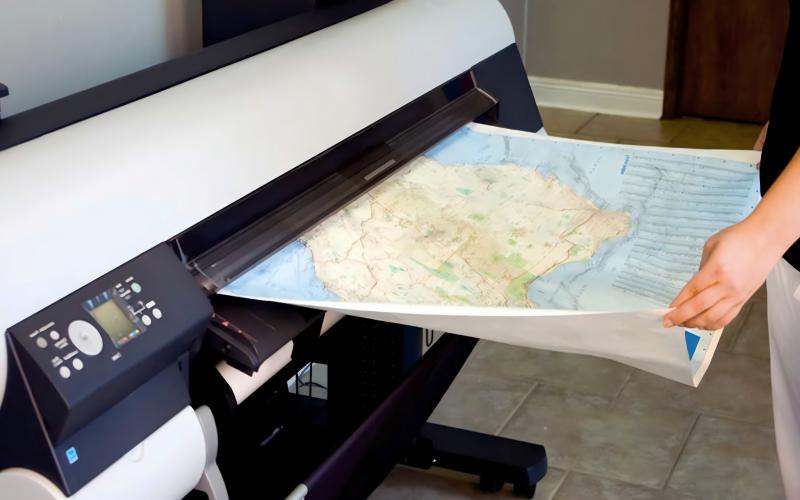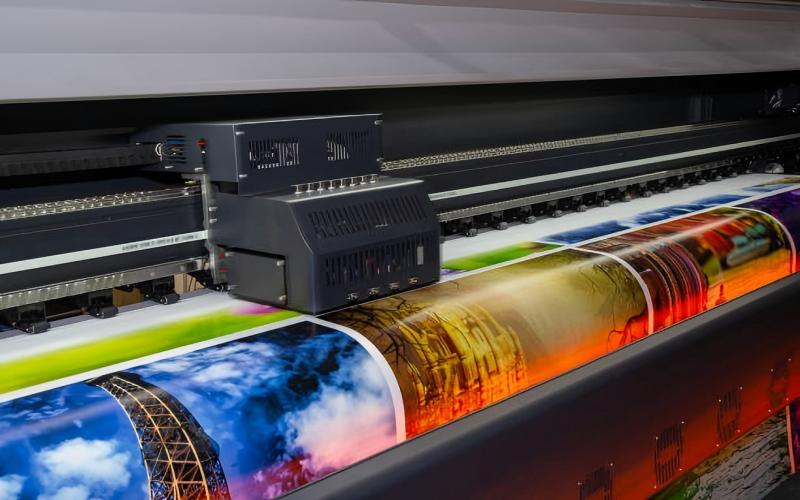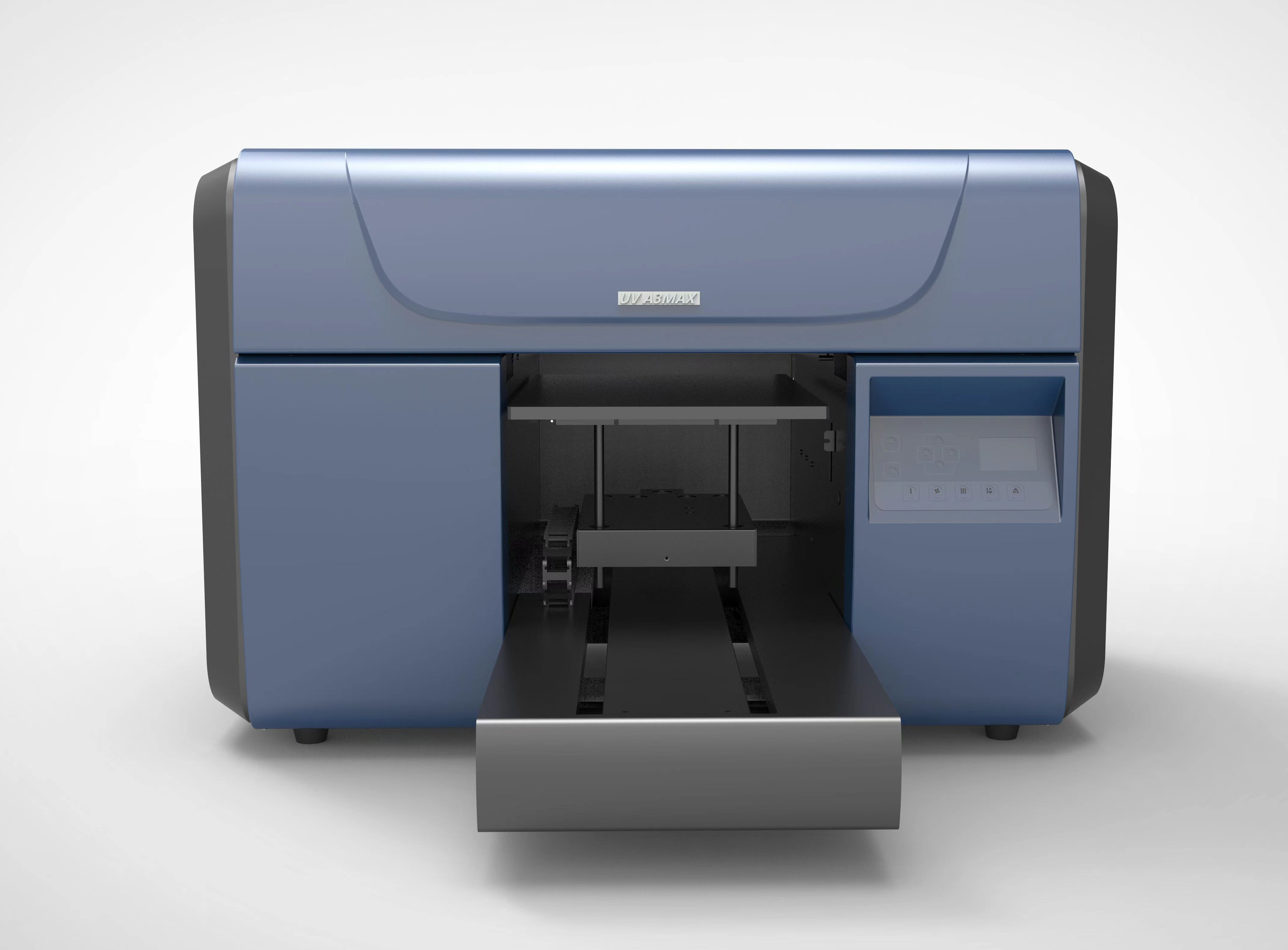What Is The Difference Between Wide Format And Large Format?
The terms "wide format" and "large format" are frequently used in printing. Despite their similar sounds, they relate to diverse printing applications and techniques. Knowing how these two vary will help you choose the best option for your needs whether your company is searching for high-quality printing for banners, posters, trade fair displays, or architectural designs.
Important Wide Format Printing Features:
Print width: 18" to 100" (24", 36", and 44 are the most popular sizes).
Types of Media: Paper, canvas, vinyl, fabric, and materials with an adhesive backing
Typical applications include banners, posters, murals, trade fair graphics, and store signs.
Ideal For: Finely detailed, full-color prints of superior quality
Marketing materials that require sharp visuals and rich colours are frequently printed using wide format printers. They are perfect for companies who want visually striking displays for branding or advertising.
Important aspects of printing in large format:
The print width should be 100" or greater, though some are as much as 16 feet.
Media Types: Textiles, stiff boards, foam core, mesh, and heavy-duty vinyl
Typical applications include billboards, vehicle graphics, building wraps, and architectural drawings.
Ideal For: Large-scale prints that require resilience to weather and longevity
For industrial applications where durability and scale are crucial, such as construction blueprints and outdoor advertising, large format printing is necessary.

Format Print Width: Usually 18" to 100" (standard sizes: 24", 36", 44").
Large Format: up to 100" (some printers can handle up to 16 feet)
Types of Media
Broad Format: Paper, canvas, vinyl, fabric, and materials with an adhesive backing
Large Format: Weather-resistant materials, stiff boards, foam core, mesh, and heavy-duty vinyl
Typical Applications
Broad Format: banners, posters, trade show graphics, murals, and shop signage
Large Format: industrial signage, building wraps, automobile graphics, billboards, and architectural blueprints
Detail & Resolution
Wide Format: Prints with fine details and high resolution (viewed up close)
Lower resolution (optimised for long-distance viewing) in large format
Environment & Durability
Wide Format: Ideal for temporary outdoor or indoor use
Large Format: Made to withstand weather and UV rays for extended outdoor exposure
Applications in Industry
Broad Format: advertising, sales, gatherings, and interior design
Large Format: Engineering, transportation, construction, and outdoor advertising
Select Wide Format If Necessary:
✔ Fine, detailed printing (for trade show displays, posters, etc.) ✔ Indoor or temporary outdoor use
Full-color visuals with vivid pictures
If necessary, select large format:
✔ Exceptionally big printing (such as building wraps and billboards) ✔ Durability over time outside
✔ Architectural or industrial uses

Wide format is ideal for indoor displays, retail signage, and marketing materials.
Large format works well for industrial purposes, construction blueprints, and extensive outdoor advertising.
You can choose the ideal print solution for your company's needs by being aware of these distinctions.
1.Wide Format Printing: What Is It?
The term "wide format printing" usually refers to printing on materials wider than those that are typically used by commercial printers, which range in width from 18" to 100". To create large-scale prints, these printers use rolls of paper, vinyl, fabric, or other materials.Important Wide Format Printing Features:
Print width: 18" to 100" (24", 36", and 44 are the most popular sizes).
Types of Media: Paper, canvas, vinyl, fabric, and materials with an adhesive backing
Typical applications include banners, posters, murals, trade fair graphics, and store signs.
Ideal For: Finely detailed, full-color prints of superior quality
Marketing materials that require sharp visuals and rich colours are frequently printed using wide format printers. They are perfect for companies who want visually striking displays for branding or advertising.
2. What is printing in large format?
Wide format printing's size restrictions are exceeded by large format printing, which can handle prints larger than 100". These printers are frequently utilized in fields like engineering, building, and outdoor advertising because they are built for large-scale tasks.Important aspects of printing in large format:
The print width should be 100" or greater, though some are as much as 16 feet.
Media Types: Textiles, stiff boards, foam core, mesh, and heavy-duty vinyl
Typical applications include billboards, vehicle graphics, building wraps, and architectural drawings.
Ideal For: Large-scale prints that require resilience to weather and longevity
For industrial applications where durability and scale are crucial, such as construction blueprints and outdoor advertising, large format printing is necessary.

3. Important Distinctions Between Large Format and Wide Format Printing
Print WidthFormat Print Width: Usually 18" to 100" (standard sizes: 24", 36", 44").
Large Format: up to 100" (some printers can handle up to 16 feet)
Types of Media
Broad Format: Paper, canvas, vinyl, fabric, and materials with an adhesive backing
Large Format: Weather-resistant materials, stiff boards, foam core, mesh, and heavy-duty vinyl
Typical Applications
Broad Format: banners, posters, trade show graphics, murals, and shop signage
Large Format: industrial signage, building wraps, automobile graphics, billboards, and architectural blueprints
Detail & Resolution
Wide Format: Prints with fine details and high resolution (viewed up close)
Lower resolution (optimised for long-distance viewing) in large format
Environment & Durability
Wide Format: Ideal for temporary outdoor or indoor use
Large Format: Made to withstand weather and UV rays for extended outdoor exposure
Applications in Industry
Broad Format: advertising, sales, gatherings, and interior design
Large Format: Engineering, transportation, construction, and outdoor advertising
4. Which Is Better to Pick?
The needs of your project will determine whether to use large format or wide format printing:Select Wide Format If Necessary:
✔ Fine, detailed printing (for trade show displays, posters, etc.) ✔ Indoor or temporary outdoor use
Full-color visuals with vivid pictures
If necessary, select large format:
✔ Exceptionally big printing (such as building wraps and billboards) ✔ Durability over time outside
✔ Architectural or industrial uses

5. In conclusion
The size, material, and planned usage of your project will determine which of the two printing formats—wide-format or large-format—is best for you.Wide format is ideal for indoor displays, retail signage, and marketing materials.
Large format works well for industrial purposes, construction blueprints, and extensive outdoor advertising.
You can choose the ideal print solution for your company's needs by being aware of these distinctions.
RECENT POSTS
-
What Is The Difference Between Wide Format And Large Format?
-
ما هو نوع الطباعة الأكثر فعالية من حيث التكلفة لمهام الطباعة الكبيرة؟
-
How to Fix Banding on Large Format Prints: A Complete Troubleshooting Guide
-
What Is The Difference Between Standard Print And Large Print?
-
How to Calibrate Industrial Printer Color Accuracy?
Application
-
 Vango DTF printerOur DTF printer adopts an all-in-one printing design, which is more space-saving and easier to operate.This is our printing show.
Vango DTF printerOur DTF printer adopts an all-in-one printing design, which is more space-saving and easier to operate.This is our printing show.
Wide applications,design for textile printing,Suitable for all kinds of fabrics, T-shirts,leather, bags and shoes etc. -
 UV DTF printer for Gold silver stickersGold and silver stickers that many customers like, let's see how it is made.
UV DTF printer for Gold silver stickersGold and silver stickers that many customers like, let's see how it is made.
More Application











.jpg)
